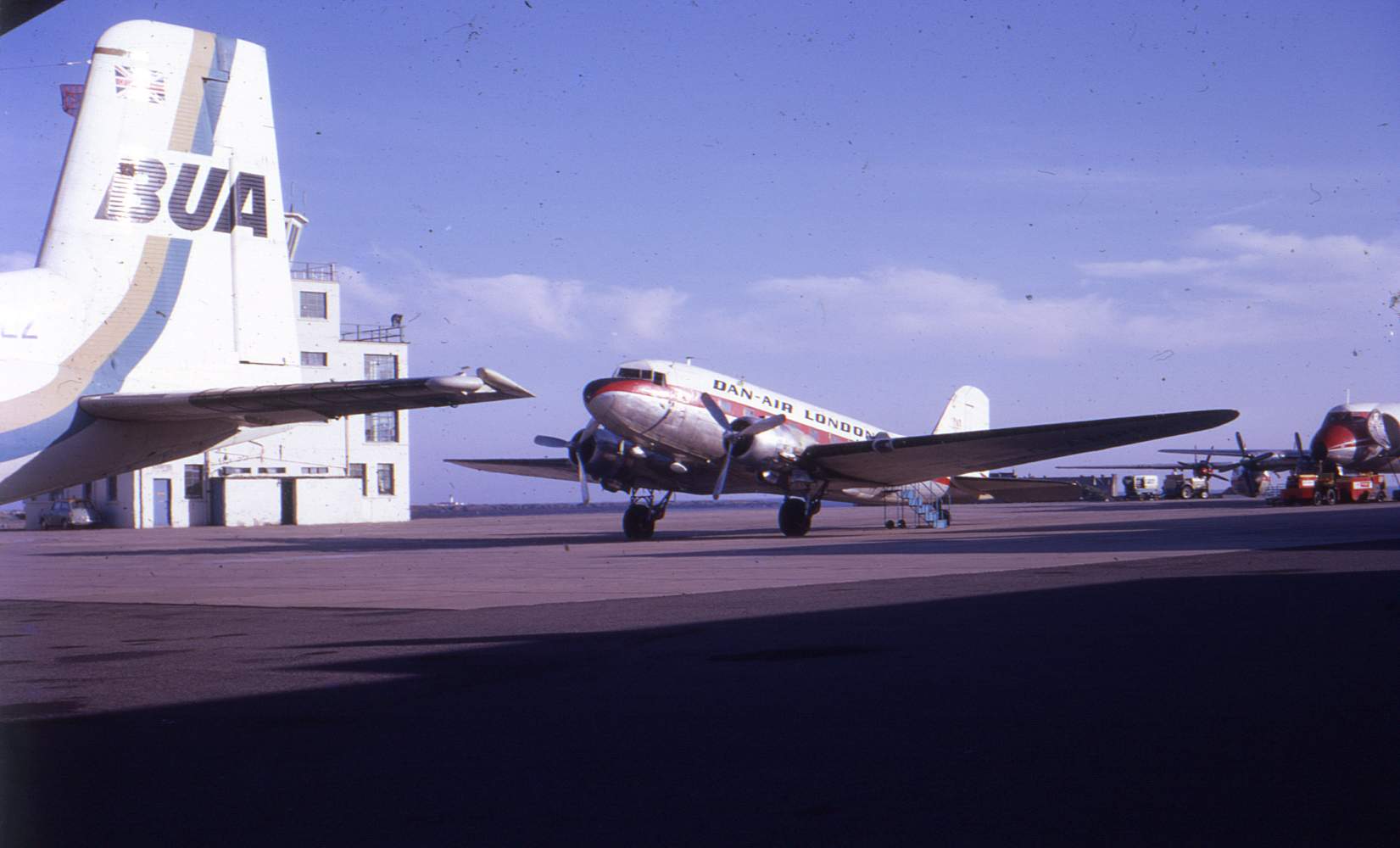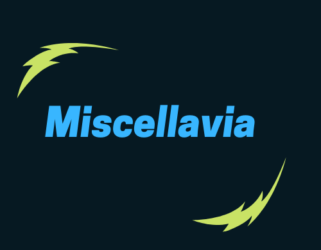In early June 1972 I travelled south from Glasgow to Prestwick by rail on one of those bright, sunny early summer days that sometimes illuminate the Ayrshire coast. The islands of Arran and Ailsa Craig were shimmering out to sea as the train skirted the seaboard, passing close to Prestwick’s airport terminal and main runway. Today, there is a dedicated railway station for the airport but, in 1972, a short walk was necessary from Prestwick Town.
I had an appointment with the British Airports Authority (BAA) Fire Service with a view to visiting their fire-training hulk, DC-6 TF-AAD. Introductions complete, I was soon in a BAA Landrover en route to the Fire Station on the far side of the field. Given the sunny weather, fire engines were being washed-down and the dress code of the day seemed to be uniform trousers and string vests -guaranteed to produce an unusual sun tan.
After completing a circuit of the Six looking for bullet holes and other signs of hostile activity from West African days, I boarded the aircraft – from memory via the starboard cargo door. As with most Biafran airlift aircraft, there remained the unmistakable aroma of dried fish to which had been added the more recent fragrances from the smoke canisters used during training. I spent a while trying to get shots of the interior using my basic non-flash 35mm camera – a fruitless task. Fortunately, the exterior shots have come out acceptably and show the reasonable condition of the DC-6.
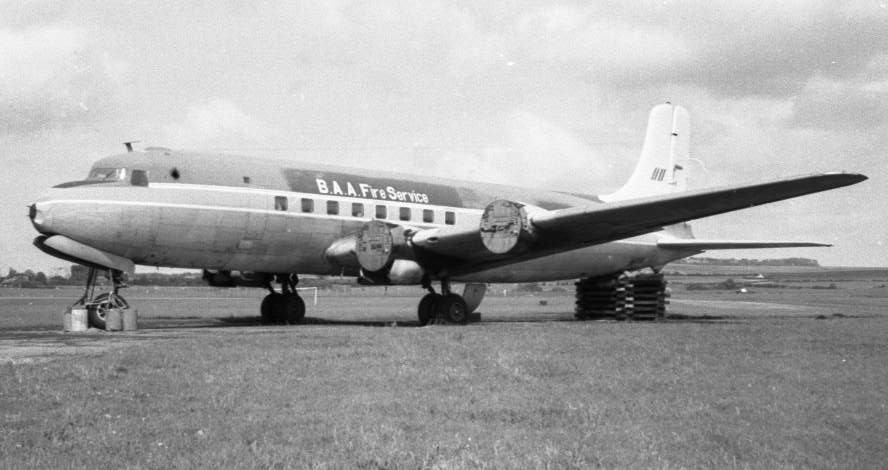
Part of my 1972 mission was to see if any of the avionics remained in the DC-6 and whether the Fire Department could be persuaded to donate them to my Air Training Corps squadron. We had a Jetstream cockpit section (see the item on G-AWBR) which was missing instruments, control yokes and switch panels. It was hoped that the Jetstream cabin would look better populated with some dials, even quite ancient ones. The fire team offered their usual friendly assistance and showed me TF-AAD’s cockpit which did, indeed, retain a selection of instruments. They told me they would do their best to send a couple of dials when the DC-6 was eventually cut-up. In the interim, they very generously gave me the engraved identification plate which had been fixed to the cabin bulkhead by Transavia. Several months later, a mysterious large and heavy cardboard box arrived at my home. Inside was an excellent selection of instrumentation from the DC-6, not just routine stuff like oil gauges and ammeters but glamorous items like compasses and artificial horizons. Most of these were subsequently bolted into Jetstream instrument panels, scrounged from a scrap dealer in Biggin Hill, and installed in G-AWBR.
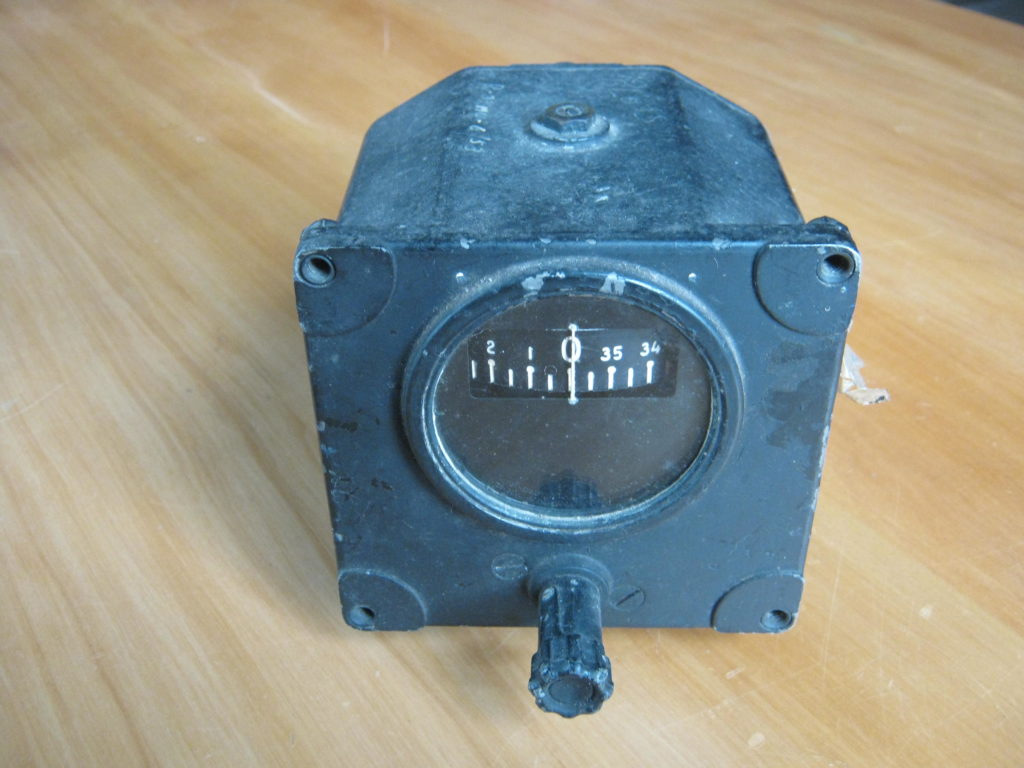
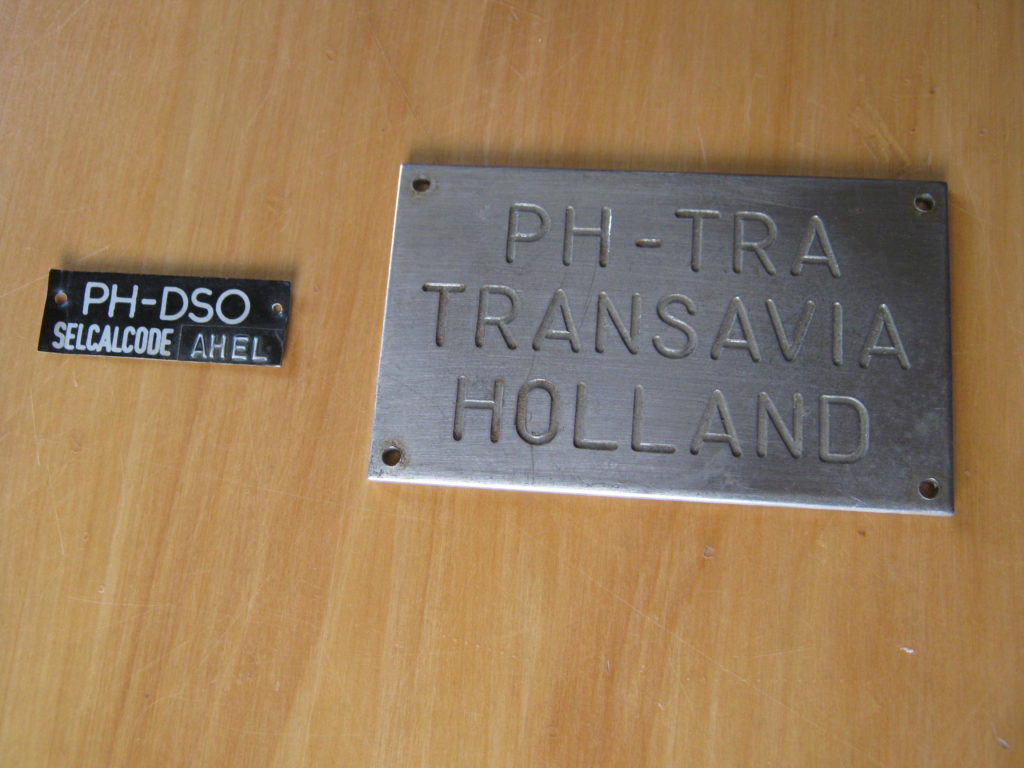
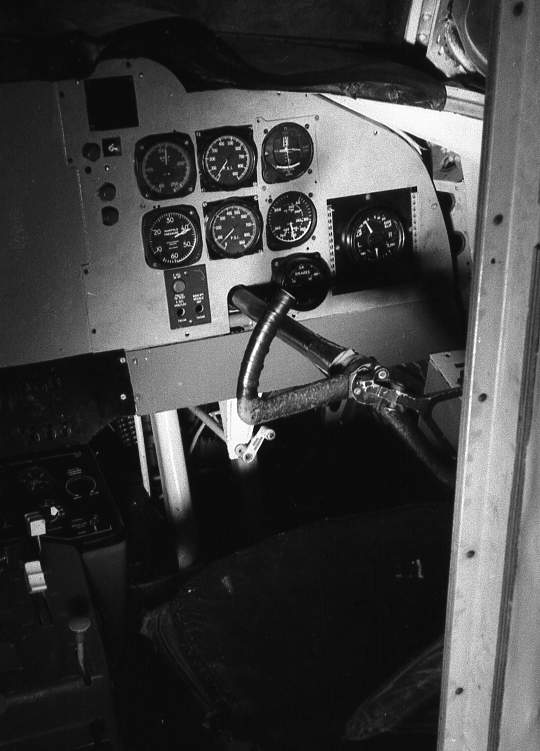
TF-AAD's arrival at Prestwick & dispersal of the Biafran Airlift fleet.
A large part of the humanitarian airlift had been operated by Flughjalp – a Dutch/ Icelandic collaboration which is examined in more detail in a later section. Their fleet had been serviced by Scottish Aviation at Prestwick during the airlift and the surviving aircraft assembled there following Biafra’s collapse in January 1970. TF-AAD was, in fact, already at Prestwick having arrived on 25th November 1969. Repairs were necessary following an incident at the Uli airstrip earlier in the month. TF-AAA reached Scotland on January 16th followed by TF-AAB inbound from Las Palmas and Sao Tome on 29th (1). TF-AAF and AAH reached Prestwick on January 30th while TF-AAG landed on February 1st. TF-AAH had been the last airlift aircraft to depart Biafra when Icelander Tony Jonsson and his crew made a brave final flight to Uga airstrip on the night of 12th/ 13th January to evacuate civilians. TF-AAG had never actually completed a mission into Biafra, having only arrived at Sao Tome on 14th January.
The condition of TF-AAD was assessed to be too poor for economic repair and she was cannibalised to provide spares for the remaining five DC-6s. The fleet was still parked at Prestwick on May 31st 1970 when a catastrophic earthquake hit Peru. Considered to this day to be Peru’s worst natural disaster, up to 70,000 people were killed and a huge area of the country devastated. International aid was offered and the DC-6s were offered to the Peruvian government for a reported nominal figure of $1 each. They departed Prestwick between June 25th and July 30th 1970 (2) staging through Keflavik, Iceland, en route to Peru. Three of the DC-6s were given Peruvian Air Force serials, 379 to 381, and remained in service until around 1974. No air force serial is reported for TF-AAF which may suggest that she and TF-AAG were used for spares – certainly TF-AAF was parked at Lima’s Jorge Chavez Airport by April 1972 (3).
Left behind in Scotland, all engines had been removed from TF-AAD by September 1970 and the Flughjalp titles and registration painted over. The twin fishes of Joint Church Aid remained on the fin and she retained the dark blue-grey upper fuselage and lighter blue cheat line (4). By the time I visited in June 1972, the blue areas had faded to a dusty grey colour and the fin had been painted white to accommodate the BAA symbol. The ‘Aid by Air’ slogan originally on the nose (5, below) had gone and the Flughjalp title box had been painted in a dark colour to contrast with the new white ‘BAA Fire Services’ titles. The nose wheel had been weighted with concrete blocks and a stack of pallets inserted under the tail -presumably to counter the weight lost following removal of the engines.
TF-AAD remained at Prestwick until replaced as a fire training aircraft by Trident G-ARPB and finally broken up in January 1984 (6). For TF-AAD’s history prior to arriving at Prestwick, please read subsequent modules.
References:
(1) Excellent detail on the Biafran airlift is provided by Michael Draper’s definitive volume ‘Shadows: Airlift and Airwar in Biafra and Nigeria 1967-1970’, Hikoki Publications, 1999.
(2) Details from article ‘Dutch T-Birds’ by Fernand van der Plas in propliner 101. TF-AAG was the first to leave on a June 25th ferry flight operated by ‘Kastrup Aerocharter’. TF-AAF departed July 3rd although it needed to return, briefly, to Prestwick following problems with #4 engine. TF-AAA left on July 30th.
(3) From http://www.diecastaircraftforum.com/custom-made-models/235321-50-years-transavia-service-dc-6b-ph-trc-1-72-a.html
(4) R.A.Scholefield’s photo taken on 19/9/1970 can be seen at https://abpic.co.uk/pictures/view/1428531
(5) The Aid By Air titles are seen in Ron Mak’s photo on Ruud Leeuw’s site www.ruudleeuw.com/others-ron_mak-p2.htm
(6) Wrecks & relics 9th edition, Ken Ellis, Merseyside Aviation Society, May 1984.
Earlier History of PH-TRA/ TF-AAD.
DC-6 construction number 43124 rolled-off the Douglas production line in early June 1948 and was delivered to SAS as SE-BDF, Alvar Viking, on 15th June. She was the last of an initial batch of thirteen supplied to SAS’s Swedish operation (7) and gave the airline a very long range capability with comfortable, pressurised aircraft. Non-stop transatlantic operations were possible and other new destinations were added across the globe. On 8th April 1949, SE-BDF inaugurated the SAS service to Karachi in Pakistan and she was also used extensively throughout the European network.
In 1959 SE-BDF was briefly chartered to Olympic Airways taking up the Greek registration of SX-DAA. Delivered on 15th September, the six was back with SAS in December 1959 and was prepared for service with the Swedish independent airline Transair Sweden.
Ref: (7) http://www.hilmerby.com/fleet/dc6.html
Transair had started life as a freight operator based at Bromma Airport, Stockholm, but had noticed potential for passenger charter work and holiday flights. An early fleet of Airspeed Oxfords was supplemented by C-46s and C-47s and their base moved to Malmo in Skane. The purchase of the three DC-6s from SAS represented a major step-up for Transair and the airline’s share capital and work force were both expanded to cater for world-wide passenger and freight operations (8). SE-BDF was delivered on 8th January 1960 and named ‘Knut Folke’.
With Sweden often associated with neutrality and peace, the United Nations found Transair Sweden to be a suitable airline to carry-out their operations in some of the World’s trouble spots.
Post independence, the Belgian Congo had disintegrated with a civil war raging between the new government and the breakaway province of Katanga. By 1960 the United Nations were heavily involved and, with Swede Dag Hammarskjold as Secretary General, it seemed natural for the UN to appoint a Swedish carrier to provide passenger and freight transport facilities. Transair dispatched two of their six C-46 Commando aircraft to the Congo along with crew and technicians. A DC-6 was added to the contingent in Leopoldville and the eventual number of staff on secondment expanded to around 50. The operation hit the World headlines on 18th September 1961 when the Transair DC-6 SE-BDY, with Hammarskjold on board, crashed in Northern Rhodesia while en route to Ndola to negotiate a ceasefire between Katangan forces and a besieged Irish peacekeeping force. The official report into the crash and the death of the 16 on board remains inconclusive as there was no evidence of bomb or surface-to-air missile damage. While pilot error was considered a possibility, further evidence has emerged recently that the DC-6 might have been shot down by a Katangan Fouga Magister. SE-BDF was dispatched as a replacement for SE-BDY and arrived on 3rd October 1961. C-46 and DC-6 operations continued until the collapse of the secessionist Katanga on January 17th 1963. The UN planned to hand over aviation operations to the local authorities and, although some of Transair’s C-46s continued to operate in the Congo until at least 1966, DC-6 SE-BDF was sent home to Sweden on 28th June 1963. She was reincorporated into the fleet with the name ‘Helsingborg’. The airline continued to grow and, by 1964, was employing over 600 personnel to operate ten C-46, nine DC-6/ DC-6B and one Dakota.
The market for inclusive tours and charter flights to Mediterranean destinations was booming with Swedish, German and British holidaymakers providing the greatest demand. Mainland Spain and Mallorca spotted the potential and large new resorts were built to cater for travellers from the frozen north. Between 1960 and 1975 the number of holidaymakers increased five-fold and Transair Sweden was well placed to benefit from the boom. Their DC-6 and DC-6B fleet met early demand and the smart red and white Transair colour scheme became well known across the Mediterranean area as well as at British airports (9). However, the attraction of the larger DC-7 soon became apparent and in early 1965 Transair negotiated a deal to bring eleven ex-Eastern Airlines DC-7s from the USA to Sweden. The sale was brokered by the ex-Bell test pilot Chalmers ‘Slick’ Goodlin’s company, Boreas Corporation, which also had plans for the Transair DC-6s. Three DC-6s passed to Norwegian airline Braathens SAFE, one went to Belgian International Air Services and five remained with Boreas. SE-BDF was one of the latter group and joined the Florida-based company with the registration N301BC on 8th December 1965. The Boreas Corporation was a broker more than an airline with an office base in New York’s Chrysler Building and a base at Miami Airport. The ex-Transair Sweden may have operated some charters around Europe in 1965 and 1966; one was spotted at Venice in March 1966 (10) but this may have been for maintenance. Goodlin’s main interest was in placing the aircraft with the fledgling Dutch operator Transavia.
References:
(8) http://transairsweden.com/history.php
(9) SE-BDF is seen to good effect in Ralf Manteul’s shot on the Southend Airport website http://saadonline.uk/wp-content/uploads/Transair-DC-6-SE-BDF.jpg
(10) Air Britain Digest.
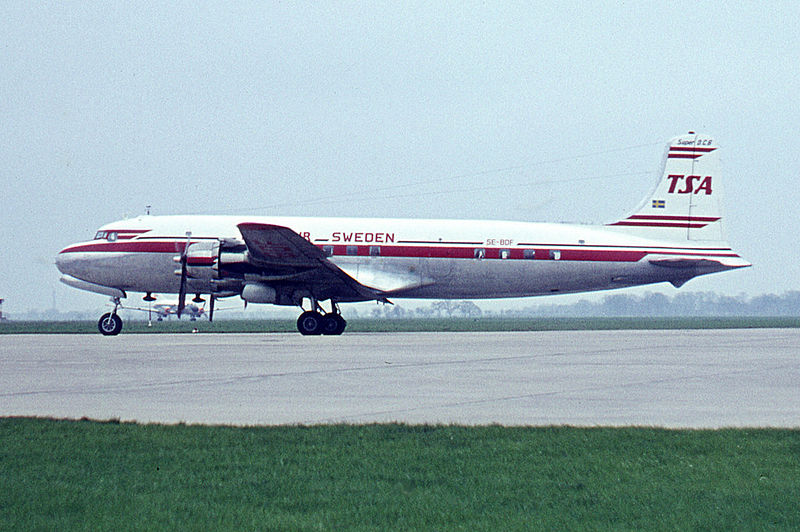
Prior to 1966, Transavia had made a couple of attempts to get off the ground but both had been frustrated by insufficient finance. The original founder was Dutch entrepreneur AJD Steenstra Toussaint who had also spotted the growth in holiday flights in the 1960s and had joined interests with Ted Langton’s British-based Universal Sky Tours travel agency. However, bank support had not been forthcoming and Langton had decided to go it alone with his own airline, Euravia, which eventually became Britannia Airways. Not to be discouraged, Toussaint tried a second approach in partnership with BIAS’s owner, george Richardson, and an interest was taken in a DC-3 which was to fly with Transavia Limburg titles from the small airfield at Beek (G-AMPZ which sat around at Lydd between February and June 1966 wearing registration PH-RIC and Transavia titles but was never delivered). Again, financial problems precluded a start to operations and it proved to be ‘third time lucky’ when Boreas, still looking for a home for their DC-6s, bought a controlling interest. An ex-Martinair manager, John Block, was drafted-in to develop the company along with Martinair’s Chief Pilot, New Zealander Pete Holmes. Slick Goodlin had been looking for an entree into the expanding European charter market and now he had it. The three aircraft joined the Dutch register as PH-TRA (our subject, SE-BDF), delivered in July 1966, PH-TRB and PH-TRC and were repainted in Transavia’s two-tone green colours (11).
Notes:
(11) The Transavia colour scheme was designed by Dutch aviation artist Thijs Postma, PH-TRA was named ‘T-Bird Maastricht’, PH-TRB ‘T-Bird Beek’ and PH-TRC ‘T-Bird Valkenburg’. Information from Fernand v.der Plas’ article on Transavia in Propliner #101 and from the KLM blog https://blog.klm.com/assets/uploads/2016/11/blog-klm-transavia-eerste-toestel-trans-1966.jpg.
However, the power of the Netherlands’ established airlines, KLM and Martinair, had been underestimated and they mounted a vigorous campaign against the formation of the new airline. They were able to delay operations until November 1966 but, with John Block’s input, a licence was eventually granted. It is ironic that, today, Transavia is part of the Air France/ KLM group.
The first revenue-earning flight took place on November 17th 1966 when Pete Holmes departed Amsterdam in PH-TRC en route to Naples with the Dutch Dance Theatre on board. Transavia went on to build-up a Mediterranean charter market supplemented by shorter shopping tours to the UK and other parts of Northern Europe. PH-TRC visited Southend within a couple of weeks of the airline becoming operational and the three DC-6s became regular UK visitors (8). Early the following year, two of the fleet were dispatched to the Congo to evacuate mercenary soldiers under UN supervision. The US Navy were also a big customer with a regular contract to ship milk to their chandlers in Malta. Sub charter work was also carried-out by Transavia on behalf of Air Ferry during June 1967 with both PH-TRA and PH-TRB involved. One of the pilots was the Canadian Don Merriam who would later be involved in the airline’s work in Biafra.
During June 1967 business was sufficient to support the lease of a fourth Transair Sweden DC-6, SE-BDO, between 4th May and 26th June 1967. Transair had retained this Six to provide back-up for their DC-7s which were experiencing some engine reliability problems. When returned off-lease, SE-BDO was taken-up by Boreas Corporation in October 1967 but retained its Swedish registration until sold to Brothers Air Service (BASCO) in Aden as VR-ABI in April 1968. BASCO had already been in touch with Boreas as potential DC-6 customers and had leased PH-TRA from Transavia during the winter of 1967. The British withdrawal from Aden had led to the closure of Aden Airways, and the Ba Haroon Brothers planned to fill the void with a fleet of Dakotas and, subsequently, DC-6s which could be used on an Aden to London service. Delivered in November 1967, PH-TRA arrived at Khormaksar airfield just as British forces withdrew. As it transpired, long haul schedules took a while to start and PH-TRA returned to Transavia six months before services were eventually started between Aden and Luxembourg.
Transavia freight operations continued apace and two further DC-6s were acquired from Loftleidir, three from Japanese Air Lines via Onyx Corporation.
However, on the passenger side, times were changing with the rise in demand for tourist charter flights throughout Europe mirrored by a requirement for larger and faster aircraft. Transavia were still successful operators of the DC-6 in the late sixties but they were moving towards their eventual purchase of jet equipment which would take the form of Boeing 707s and Sud Aviation Caravelles.
In October 1968, a major charter operation of a very different nature opened up for them: humanitarian work in Africa. The long-running civil war in the Congo had flared-up again in 1966/67 during the ‘Simba Revolution’ and Transavia had been involved briefly on behalf of the United Nations. By the middle of 1967, a further post-colonial civil war had erupted in Africa.
Background to the Nigerian Civil War.
The Nigerian Civil War had begun in a similar manner to the Congo with tribal tensions leading to a breakaway state attempting to secede from a larger, newly-independent country. The Ibo tribe dominated the eastern part of the country but had traditionally held many administrative and government posts throughout the country. An early attempt at coup d’etat led to the division of Nigeria into five regions broadly along tribal boundaries. Each was governed by a military commander with central Federal control in Lagos. Lt-Colonel Ojukwu took control of the eastern region and was the only commander to retain in command of his region following a counter-coup in July 1966. The Ibo were widely considered to have caused the unrest leading to this second coup and, by late-1966, were experiencing persecution and prejudice, especially in the Northern region. Ojukwu refused to accept the authority of Lagos over the eastern region and began to stockpile arms in advance of what seemed to be an inevitable declaration of independence. In April 1967, the Eastern area began to withhold Federal taxes and, as always when money is involved, the situation quickly degenerated into civil war. The breakaway state, now named Biafra, assembled a motley air force but was unable to prevent Federal forces from rapidly imposing a sea blockade on their key town, Port Harcourt. Biafra purchased their own L1049G Super Constellation, the ‘Grey Ghost’, and used it to fly personnel and armaments between sympathetic European countries, such as Portugal, and Port Harcourt. Additionally, the services of American entrepreneur Hank Warton were employed by the Biafrans. Warton put together a fleet of illicitly-registered Constellations and DC-7s for armament deliveries between Europe and Biafra. However, other bulk imports, such as food, were effectively halted by the blockade and this put Lagos in a position to starve Biafra into submission. This would inevitably create a humanitarian crisis in Biafra and, for the first time, TV and film cameras were in place to show the outside world the death and misery this would cause. Humanitarian organisations such as the International Committee of the Red Cross (ICRC), the World Council of Churches and the Catholic Aid Agency, CARITAS, were involved as early as August 1967. By December of that year the ICRC had chartered DC-6s from the Swiss airline Balair for relief flights between the Spanish-controlled offshore island of Fernando Poo and Port Harcourt. The agreement of both Biafran and Federal authorities was required for the ICRC operation and the latter insisted on a limited number of strictly regulated flights. In January 1968, Lagos withdrew its permission altogether which left the ICRC unable to operate.
Meanwhile, protestant and Catholic church groups had watched the onset of famine with concern and, controversially, had started chartering space for food on Warton’s blockade-breaking flights from Portugal to Biafra via the Portuguese-administered island of Sao Tome. The alliance of the Church and Hank Warton was never going to last as it was both politically embarrassing and prohibitively expensive. The Federal government considered these flights, and indeed the church departments behind them, to be illegal and, as such, a fair target for their air force. Following the loss of Port Harcourt to Federal forces in May 1968, flights had to be transferred to a makeshift location near the village of Uli. Initially known as ‘Airstrip Annabelle’ it was, in fact, little more that a widened stretch of the dead straight Onitsha to Owerri Expressway. Today a dual carriageway stretch of Nigeria’s A6, in May 1968 it became known to the World as Uli airstrip. A ready target for the Federal air force during the day, it opened for operations at night with rudimentary landing lights which were activated minutes before each aircraft landed. In order to have the lights switched-on, an approaching aircraft had to transmit a coded phrase to ground control over VHF radio. The codes were varied with only the Warton organisation holding the key – an advantage he put to good use during the negotiation of charter rates.
It became clear that other means of delivering aid were necessary and the churches began to assemble their own charter fleets. With large capacity propeller-driven airliners approaching the end of their careers, church and charity operators from Switzerland, Scandanavia, the UK, the Netherlands, the USA, Canada and France were readily able to charter DC-6s, DC-7s, Constellations and C-97s from reputable aviation companies at favourable rates. In August 1968 SE-ERK, a Transair DC-7B chartered by Pastor Viggor Mollerup of Danchurchaid, delivered a cargo of medicines from Frankfurt to Sao Tome. The flight was commanded by Transair’s Chief Pilot, 59-year old Count Gustav von Rosen, a notable adventurer and humanitarian who had previously flown Transair DC-6s for the UN in the Congo (and had only missed being on Dag Hammarskjold’s final fatal flight through illness). No stranger to relief operations, von Rosen was frustrated by the ICRC flights to Biafra and also the erratic nature of the Warton organisation. After some initial reservations, he agreed to fly SE-ERK from Sao Tome to Uli and, upon reaching the mainland, dropped to a sub-60 metre altitude to cross the coast below Federal radar. Transair’s insurers may have been less enthusiastic than the group of senior church personnel who met him at Uli airstrip following his arrival on the night of August 12th. The meeting included several Catholic priests, Canadian Presbyterian minister Reverend Johnston (12) and, possibly, Colonel Ojukwu himself. After persuading the Biafran authorities to share the landing codes so valuable to Hank Warton, he departed Uli on the night of August 13th and flew SE-ERK to Sao Tome and then onward to Transair’s base in Malmo, Sweden. Here, he put forward plans which involved the immediate cessation of church use of Warton’s fleet and the subsequent chartering of up to eight airliners from reputable Scandanavian companies. By noon on August 19th, Nordchurchaid had been formed and an initial six aircraft pencilled-in on rolling 14-day contracts. Three of the aircraft were Transair DC-7s with the first, SE-ERD, departing for Africa on August 22nd, a mere ten days after von Rosen’s first visit to Uli. Transair operated in Biafra for six weeks, flying 63 round trips carrying a total of over 560 tonnes of aid (13). In October 1968, the Swedish fleet was replaced by Transavia DC-6 and DC-6B aircraft.
References:
(12) From ‘Biafra and the Canadian Churches 1966-1970’ by Peter Bush.
(13) As noted previously, the definitive work on the Biafran Airlift is Michael Draper’s superb 1999 history ‘Shadows’ published by the Hikoki Press. Other information has been taken from Father Tony Byrne’s memoir ‘Breaching the Blockade, airlift to Biafra’ published by Colomba Press in 1997.
Transavia operations in Biafra.
The Transavia fleet dispatched to West Africa was contracted via a tripartite lease which involved the Dutch company, Nordchurchaid and Loftleidir, the Icelandic company which owned two of the DC-6Bs (14). The full Transavia fleet of DC-6s comprised PH-TRA and PH-TRB with DC-6Bs PH-TRC, PH-TRD, PH-TRE, PH-TRG, PH-TRK, PH-TRL and PH-TRZ. PH-TRA had been in regular use on Transavia’s European routes during autumn 1968 and was noted at Gatwick on 21/9/68 and Manchester on 1st October 1968 (10). In the succeeding fortnight PH-TRA was overhauled in Amsterdam prior to departing for Africa. All seating was removed and the cargo bays were treated with anti-salt compound to permit the hauling of dried fish. Transavia’s agreement with Nordchurchaid was for three aircraft for an initial six-week period rather than Transair Sweden’s fortnightly segments. The two DC-6Bs were contracted at a rate of $355 per hour while PH-TRA was slightly cheaper at $315 per hour (13). There was an agreed minimum utilisation for each aircraft of five hours per day.
PH-TRA was the first to arrive in West Africa on the night of 16th October and was in service the following evening. Two ex-Loftleidir DC-6Bs, PH-TRD and PH-TRL, arrived on October 19th and 25th respectively. Eventually, all the Transavia fleet would make an appearance in Africa as aircraft were circulated back to Amsterdam for servicing. The crews were multi-national and included both regular Transavia personnel and new-employees attracted by the wages, adventure and humanitarian benefit. Transavia’s Chief Pilot Pete Holmes was initially joined by one of the company’s regular Captains, Canadian Don Merriam, Icelander Thorsteinn (Tony) Jonsson and Jugoslav Captain Kamensec. Tony Jonsson, an ex-RAF fighter ace, was a regular Captain of PH-TRA and became known as the ‘Salt Man’ as the Transavia aircraft were well-protected from salt corrosion and could carry salty cargoes. Jonsson was well-experienced in flying into primitive airstrips having cut his teeth in challenging conditions in Iceland and Central Africa. During the early sixties he adapted his DC-3 bush pilot skills to fly for Sabena in the Congo and became adept at landings on jungle airstrips. He was briefly seconded to fly Patrice Lumumba’s DC-3 during his election campaign in the Congo (15).
On the night of 21st/ 22nd February 1969 Tony Jonsson and fellow DC-6 pilot John Knox had a close call while landing PH-TRL at Uli. The Federal air force’s persistent night bomber, in fact a modified DC-3, dropped a bomb close to the runway just as ‘TRL was landing. The blast missed the DC-6B but, prior to take-off for the trip back to Sao Tome, it was discovered that a piece of shrapnel had caused extensive damage to the cockpit electrical systems. The aircraft was camouflaged with palm leaves to deflect the attention of the Federal air force during the following day’s stay. With the assistance of a spare switch panel and inventive soldering by one of Transavia’s engineers, PH-TRL was clear to depart the following night. This mirrored an incident which had occurred on the night of 9th/ 10th February when the DC-3 ‘bomber’ had hit the Uli runway just ahead of DC-6B PH-TRD. Fortunately, no damage was sustained to the aircraft as backup would have been limited due to PH-TRA‘s departure for a service break in Amsterdam on February 10th.
Meanwhile, organisational changes had occurred within the church airlift operation. CARITAS International had arranged a summit in Rome during early November 1968 and invited Nordchurchaid and the German churches. The title of Joint Church Aid was adopted and ‘JCA’ expanded to include US-provided C-97G Stratofreighters as well as the Canadian Canairelief Super Constellations. Together, they made a substantial Sao Tome-based fleet and, by 28th May 1969, the 2500th flight had been made (13). Transavia remained a major constituent of the operation with the basic concept that three DC-6s would be available at any given time. However, with increased flying hours, it was the aircrew who were approaching limits imposed on Dutch-registered aircraft. The solution involved the transfer of the Transavia fleet to a new organisation, Flughjalp, which was registered in Reykjavik and assisted by Loftleidir, Iceland’s pioneering transatlantic airline and long-time associate of Transavia (13).
References:
(14) https://www.icelandair.com/en-gb/about/history/flying-since-1937/
(15) Tony Jonsson wrote about his experiences in the Luxair-published book ‘Lucky No. 13’.
On May 8th 1969, PH-TRZ and PH-TRL became the first aircraft to join the Flughjalp fleet. The former DC-6B ‘TRZ had originally been TF-LLC with Loftleidir (hence the ‘LL’ in the registration) and had been leased to Transavia. Following maintenance in Venice with Aeronavali in early 1969, ‘TRZ had been on rotation in West Africa since 1st March. She was re-registered to Flughjalp as TF-AAA with the ‘AA’ representing ‘Aid by Air’, the English translation of Flughjalp. PH-TRL had also been a Loftleidir aircraft, TF-LLE, and she was re-registered TF-AAB. The other Sixes, PH-TRA, TRB and TRC, were owned by Transavia and were sold to Flughjalp on May 12th 1969 to become TF-AAD, TF-AAE and TF-AAF. PH-TRA had been back in the Netherlands in early May for overhaul and rejoined the airlift on May 21st. Ruud Leeuw’s website has a Ron Mak photo of a DC-6 being overhauled at Schiphol and, as it has the Aid by Air titles, it is probably PH-TRA/ TF-AAD. While Transavia and Loftleidir aircraft on the airlift had, up to now, flown with their own colour schemes, Flughjalp adopted the JCA ‘blue top’ scheme designed to make them less conspicuous at night and on the ground at Uli. One of the aircraft, TF-AAE (ex-PH-TRB), was retitled ‘Flughjalp’ and emblazoned with the JCA ‘two fishes’ but never made it to the full blue-top scheme. A little camouflage would have been useful for ‘AAE when she had to remain overnight at Uli on the night of June 2nd 1969 following an attack by two Federal MIG-17Fs during her landing run. The fighters, flown by South African Ares Klootwyk and a British fellow mercenary, fired cannons and rockets at the unarmed transport and severe structural damage was sustained. TF-AAD , flown by a British crew, was on final approach behind ‘AAE and passed over the damaged aircraft to land further down the runway without being attacked by the MIGs (10). TF-AAE made it back to Sao Tome on June 4th but never flew again and was scrapped on the island.
The incident with the two Flugjhalp DC-6s was a foretaste of the murderous attack on a Swedish Red Cross DC-7 on the night of 5th/ 6th June 1969 by two Federal fighters. The DC-7 SE-ERP had crossed the Nigerian coast inbound to Uli with a load of rice when it was intercepted by two MIG17s flown by mercenary pilots. The DC-7 was raked by cannon fire and may have stalled before crashing into the ground with the death of all on board. The Red Cross airlift was immediately halted and the JCA aircraft also trimmed their schedule. Flughjalp did continue reduced operations with TF-AAD flying into Uli the following night, but the total aid uplifted dropped to around 10% of that being carried at the end of May 1969. Fortunately, this did not last and, by the end of July, JCA’s C-97 fleet, Canairerelief’s four Super Constellations and the four Flughjalp DC-6s had returned to flying the same tonnages achieved prior to the DC-7 attack. The Red Cross airlift remained stalled and the JCA operation was ramped-up by way of compensation. Red Cross food and medicines were transferred from Fernando Poo to JCA’s Sao Tome base and, by September 1969, up to 20 flights were landing at Uli each night. Mishaps continued and, during November, TF-AAD suffered nosewheel damage at Uli and, on November 25th, departed Sao Tome en route to Prestwick via Las Palmas on what would become her final flight. The remaining three Flughjalp Sixes continued to operate up to three flights per night each and contributed greatly to the peak airlift performance in December 1969, the last full month of the operation.
On 22nd December 1969, the Federal forces commenced a final push, splitting Biafran territory in two by Christmas Day before turning eastwards towards Arochukwu and west towards Uli. Despite continuing rocket attacks and the bombing of Uli, the JCA team continued operations with Flughjalp’s Tony Jonsson also assessing the condition of the Uga airstrip. The Uli control tower crew departed on January 10th but a Flughjalp DC-6B managed a further flight to evacuate aid workers. The following day, an L749 Constellation leased by the Biafran government landed at Uli to evacuate the Biafran leader, Colonel Ojukwu, and his aides. A french-chartered DC-7 also managed to land and take off from the damaged Uli airstrip noting missing runway lighting, unserviceable navigation aids and large holes in the runway surface. It was therefore very courageous of JCA to schedule a further six flights for the night of January 11th/ 12th. Flughjalp’s Tony Jonsson landed the first DC-6B, offloaded the freight and departed with passengers. The second aircraft, a C-97, also landed but the third, also an Icelandic DC-6B, turned back to Sao Tome without landing. Finally, on the night of January 12th and some hours after the capitulation of Biafra Tony Jonsson and his Icelandic crew flew TF-AAH into the primitive strip at Uga while Canairerelief’s Constellation CF-AEN circled overhead. Food supplies were unloaded but there was much confusion on the ground and the aircraft and embarking passengers were hit by gunfire. Two engines had been left running and Jonsson started the other two, commencing taxiing while the doors were still being closed. Sweeping hurriedly into the air, TF-AAH climbed to 10,000 feet before setting course for Sao Tome, the last aircraft on the World’s largest ever civilian airlift.
Hits: 1567
